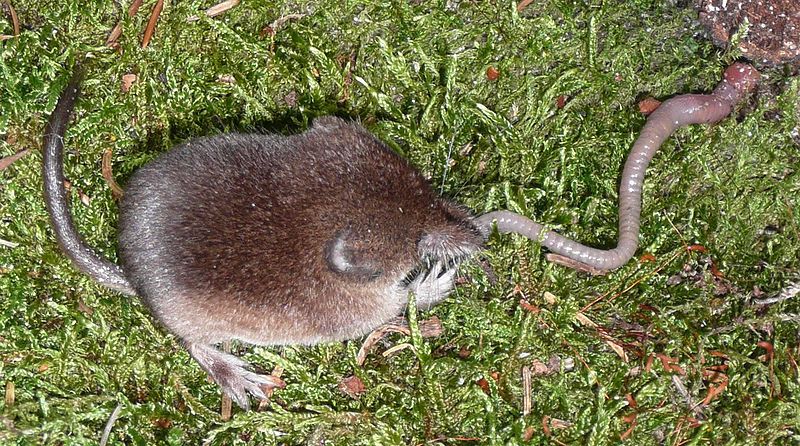-
 Plasma membrane
Plasma membrane
-
 Blastocyst
Blastocyst
-
 TTP
TTP
-
 Aulacogen
Aulacogen
-
 Residue
Residue
-
 Mesosphere
Mesosphere
-
 Tack
Tack
-
 Nosocomial
Nosocomial
-
 Gulf Stream
Gulf Stream
-
 Giant magnetoresistance
Giant magnetoresistance
-
 Rostrum
Rostrum
-
 Birds Directive
Birds Directive
-
 Pulse
Pulse
-
 Container return scheme
Container return scheme
-
 Albumin
Albumin
-
 Spar
Spar
-
 Amphihaline
Amphihaline
-
 Isostasy
Isostasy
-
 Abrasion
Abrasion
-
 Cardiac arrest
Cardiac arrest
-
 Enhanced coal bed methane recovery
Enhanced coal bed methane recovery
-
 Corot
Corot
-
 Gel-coat
Gel-coat
-
 Glucose
Glucose
-
 Polyp
Polyp
-
 Radiative forcing
Radiative forcing
-
 Half-life
Half-life
-
 Vertebral column
Vertebral column
-
 Appulse
Appulse
-
 Smoke detector
Smoke detector
Eurasian shrew
Old World shrews are classified in the family Soricidae. As there are 368 known species of shrew around the world, we will describe one of the most widespread species in Metropolitan France: the common shrew, or Eurasian shrew.
Eurasian shrew (Linnaeus 1758) - Sorex araneus
- Order: Soricomorpha
- Family: Soricidae
- Subfamily: Soricinae
- Tribe: Soricine
- Genus: Sorex
- Size: 70 to 80 mm (tail length from 35 to 55 mm)
- Weight: 7 to 13 g
- Life span: 16 to 18 months
IUCN conservation status: LC least concern
Description of the Eurasian shrew
The Eurasian shrew has a short and thick coat with a brownish tint on the back and the top of the head, while its abdominal area is greyish. Its face has a pointed muzzle in the shape of a trunk, covered with sensory whiskers. The tips of its teeth are red. This particular characteristic is due to the presence of mineral iron in the superficial layers of the enamel. The tint is most pronounced in young shrews whose teeth are not yet worn.
Common shrew. © Manuel R, GNU FDL Version 1.2
Habitat of the Eurasian shrew
This mammal is found in all types of habitat in the Palearctic area (all of the Northern Hemisphere), from Great Britain to Siberia, from sea level up to an altitude of 1,000 metres. It is found both in crop fields and residential gardens.
Behaviour of the Eurasian shrew
The shrew is not a burrowing animal. It uses tunnels already built by field mice or voles, or any crevice sufficiently narrow and deep for it to feel safe. It is very territorial and doggedly defends its living space against intruders. If its intimidating cries are not enough, the ensuing battles may be fatal and the body of the defeated animal will then be eaten... The common shrew has the ability to reduce its size when living conditions become unfavourable (Dehnel phenomenon). The weight of its main organs drops, its vertebra shorten and its cranium decreases in volume under the effects of cells specialised in the destruction of bone mass. This type of phenomenon is more characteristic of specimens in the Nordic regions. The shrew is an animal that does not adapt well to heat, and may very well die of it.

Eurasian shrew. © Agnieszka "Owca" Kloch, CCA-SA 3.0 Unported license
Reproduction of the Eurasian shrew
It can have two to five litters per year. After a gestation period that lasts about 27 days, the female gives birth to two to eight young, each of which barely weighs 0.5 gramme, which she nurses for about twenty days. This time period coincides with the opening of the eyes of the young. The mortality rate is quite high and can reach 25% between the first and the fourth month.
Diet of the Eurasian shrew
The shrew has an insatiable appetite and practices coprophagy, meaning that it re-ingests part of its incompletely digested excrement. Its metabolism is very high and it needs to continually feed to recover the calories needed for its survival.It is capable of absorbing double its weight every day. It mainly eats insects, worms and spiders. But it can also settle for lizards.
 Photo of a common shrew. © Soricida, CCA-SA 3.0 Unported license
Photo of a common shrew. © Soricida, CCA-SA 3.0 Unported license
Latest
Fill out my online form.




